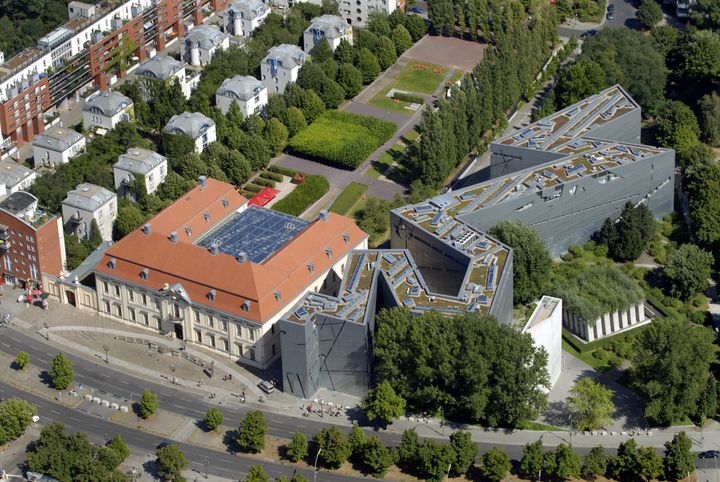Preserving Heritage, Inspiring Modernity: The Islamic Art Museum by I. M. Pei - Doha, Qatar

On a man-made island at the waterfront of Doha sits the Islamic art museum. Designed by the renowned I. M. Pei in the 2000s, the building is a prominent monument that overlooks the gulf bay and structures the Qatari coast.
From the fabricated site choice to the architecture and design, the building is a romantic canvas, radiating nostalgia for the past and present at once.
Mass plan and accessibility
The museum occupies a poetic position on the skyline of Doha. It is connected to the mainland by a passageway that incarnates the crossing from the past to the present and draws an axe into the museum.
The second structuring axe is outlined by a diagonal palm alley representing the pilgrimage from the desert to the sea of prosperity.
Detached and still attached to the main ground, the project rises from the water in all its splendor as if an extension of Atlantis City.

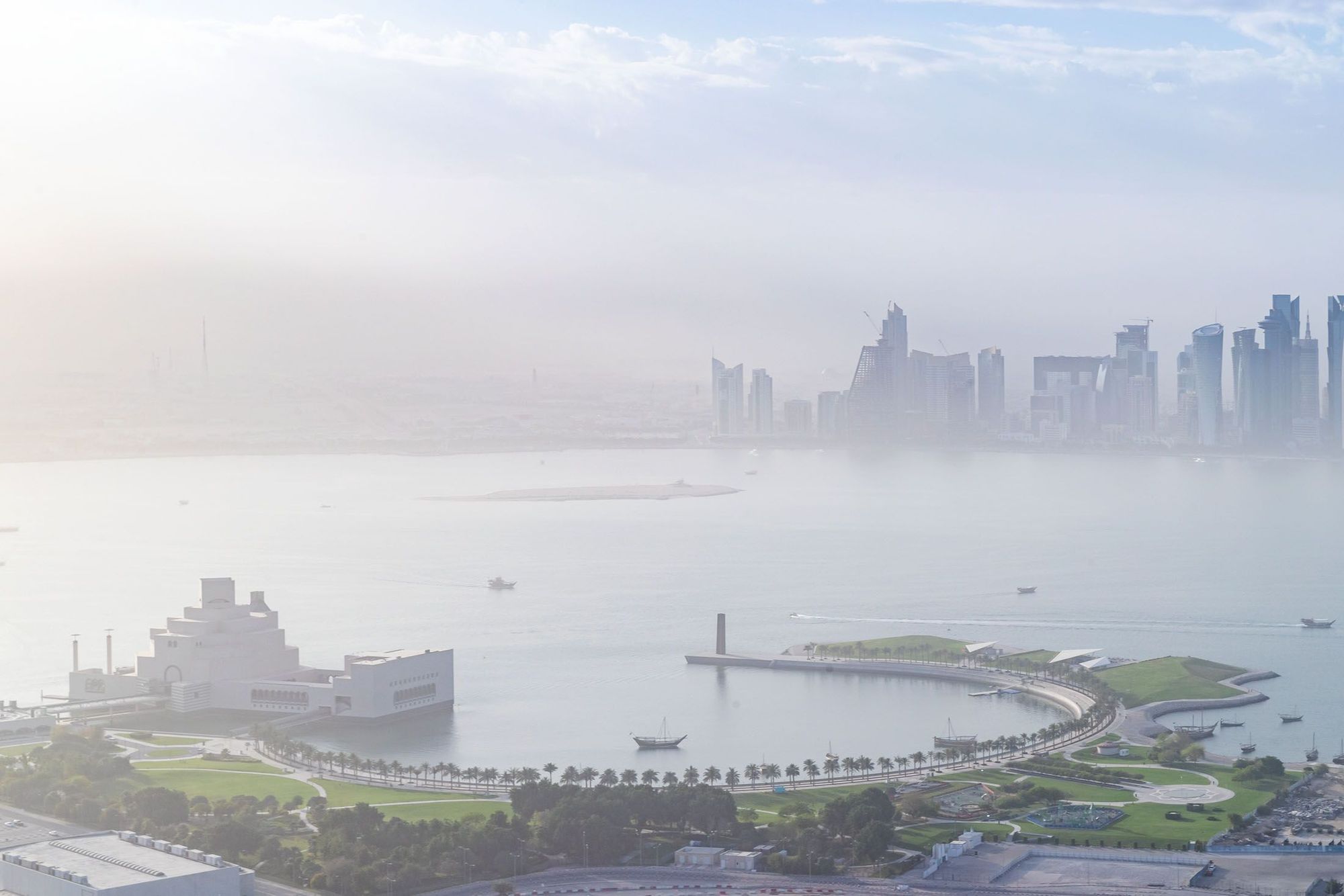
The mass plan includes three main units: the museum building, the educational wing, and a courtyard. The layout is inviting and offers generous circulation pathways: pedestrian, mechanic, and by boat.
The outline of the project showcases the principles of Islamic architecture and planning. The gradual approach of the project through passageways offers a chicane entry.
The courtyard connecting the two Ailes and the central fountain recreate the archetypal mosque plan.
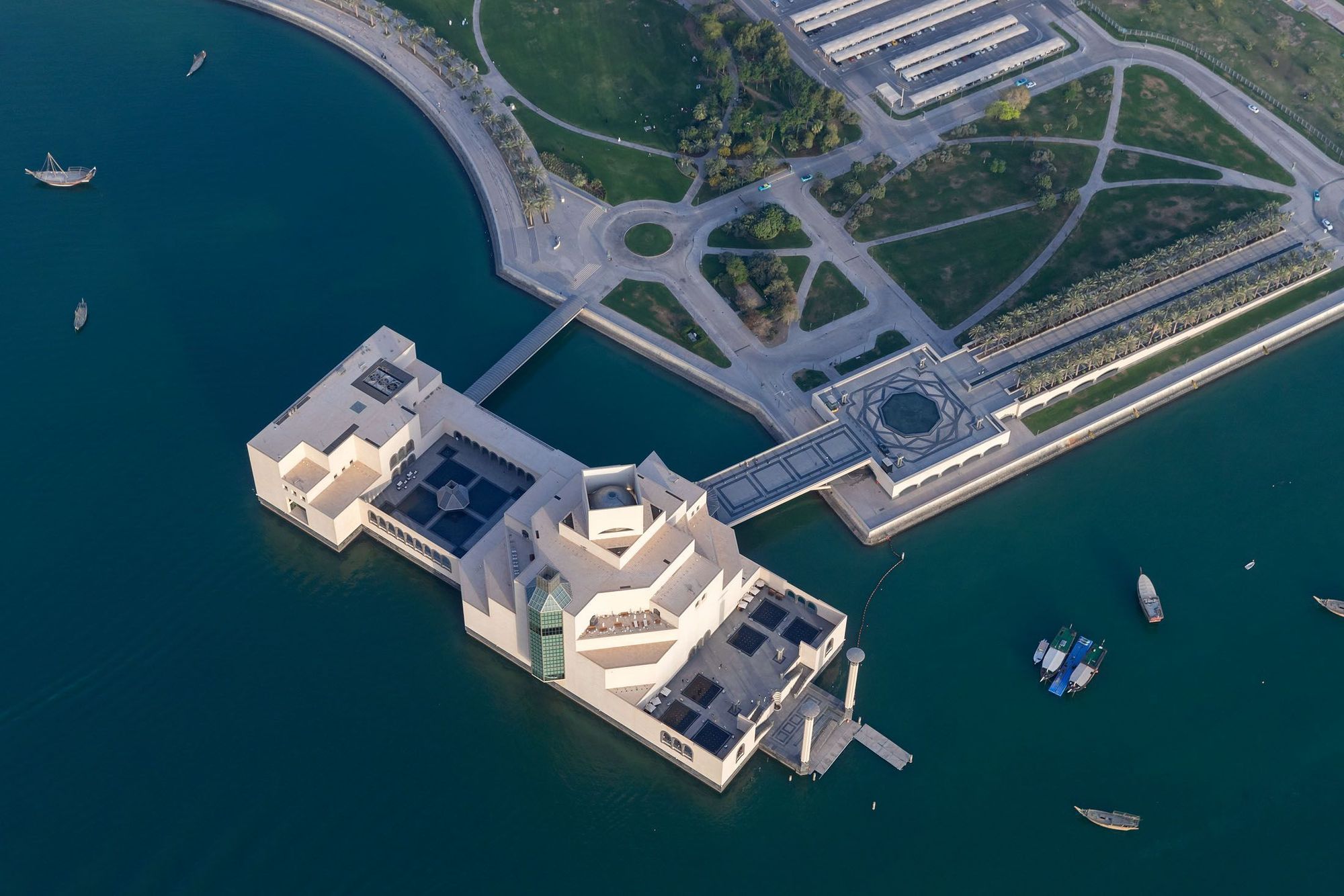

Form
The body of the museum has an austere allure. It brings to mind the image of the Sabil fountain at the Ibn Tulun mosque in Cairo.
The volume reflects modesty and geometric complexity at once. It is composed of the superposition and rotation of a cubic put on display under the sunlight and blue waves of the Arabian Gulf.
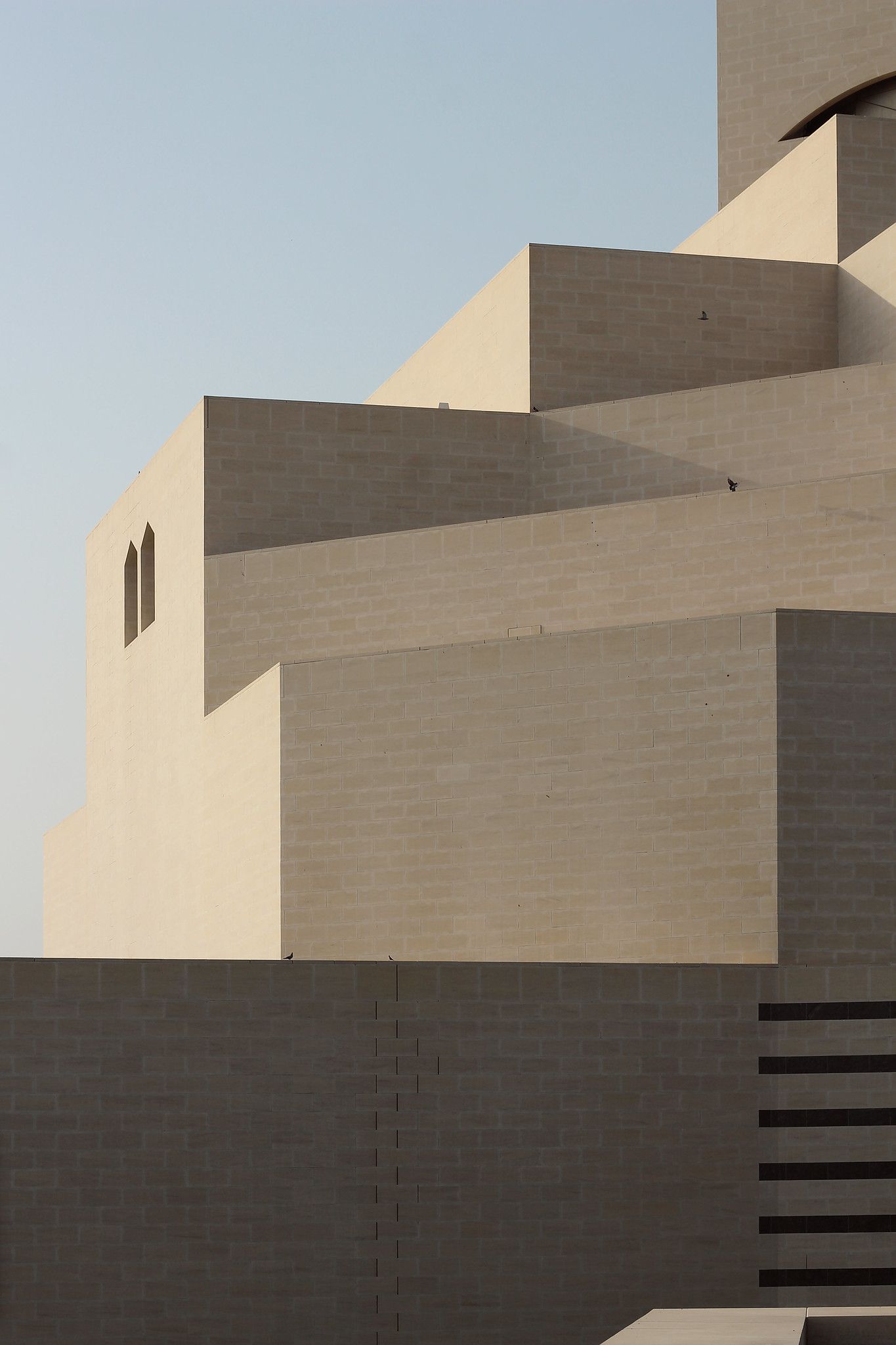
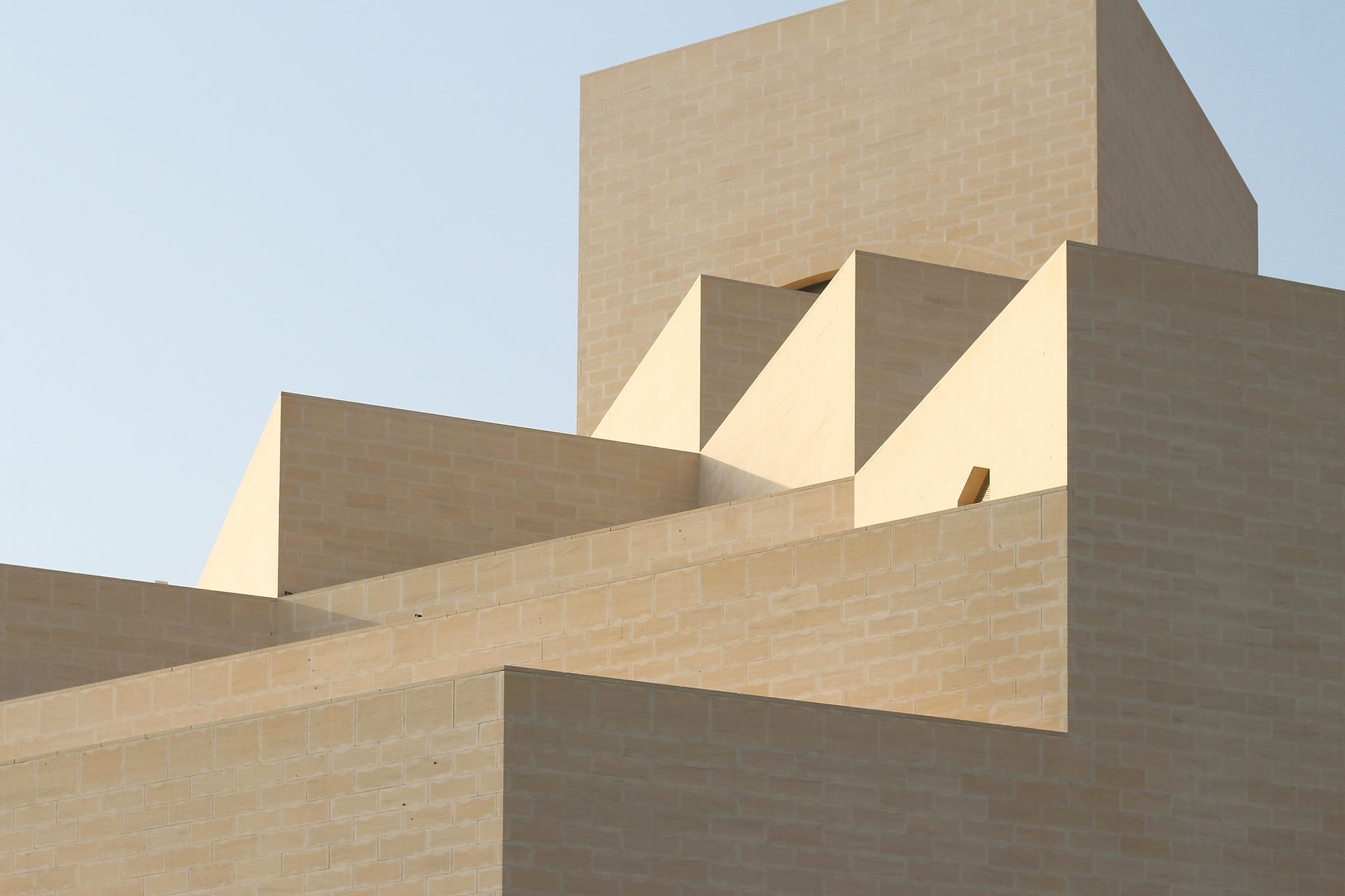
At the top hides an introverted steel atrium through which light penetrates and reflects within a faceted dome: an eye to the horizon and into the museum.
The project is a painting where the environment is a vessel used to exhibit the museum. The color palette is eye-dropped from nature: the blue of the water, gold of the sun, and whiteness of the limestone.
Light is harnessed to become a dynamic ornament that embellishes the poetic scene.
The use of elements of Islamic and Eastern architecture conveys a strong message of cultural prosperity and its geometric geniality: the simplicity of the cube. The dominance of the dome. And the romance of the arc.
With that, the museum is Arabic, Islamic, modest, elegant, and modern.


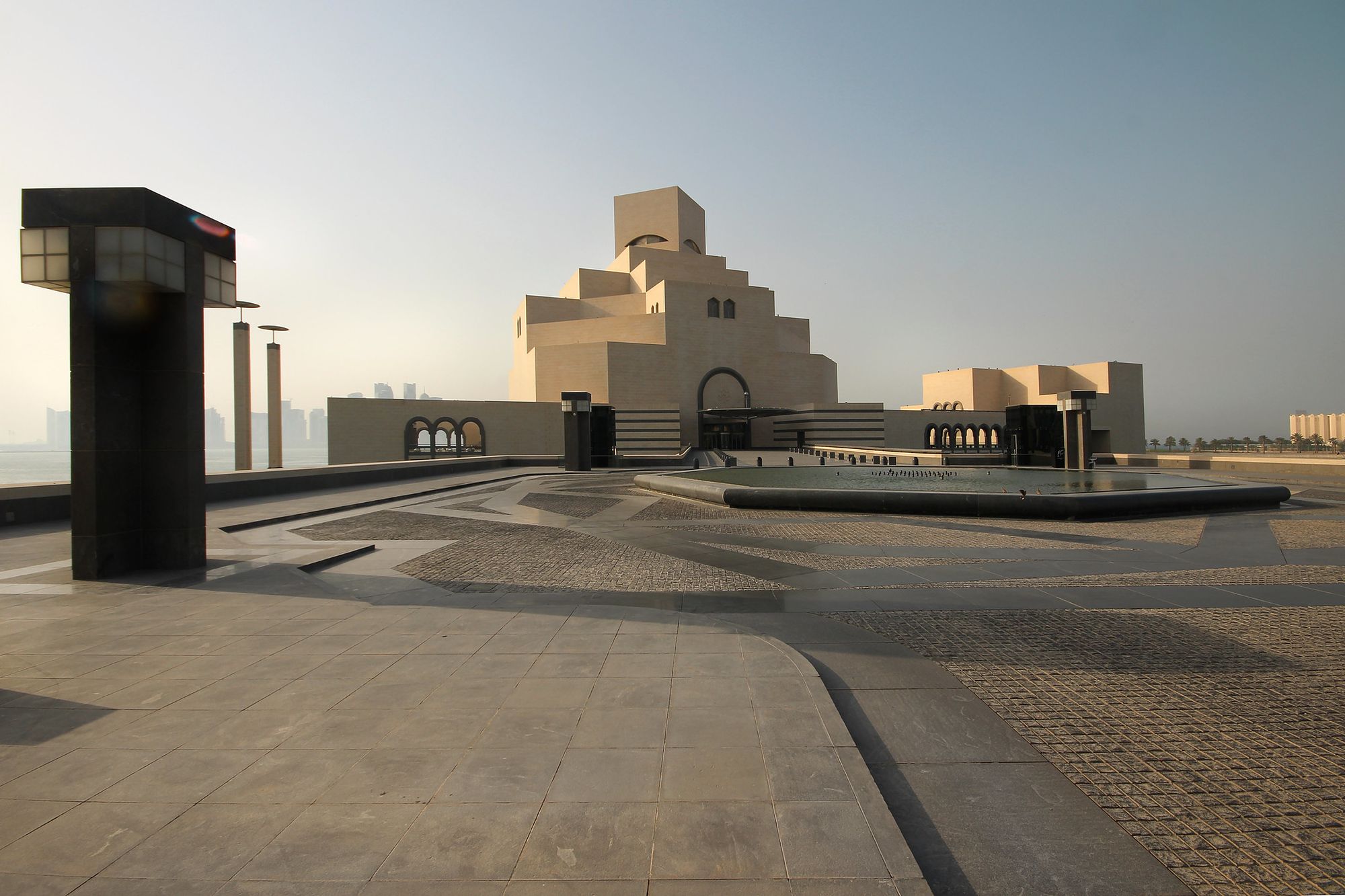
Interiors and plans
The interior space has several access points structured along the two principal axes. The inside is organized along the central atrium that comprises the main stairs.
The interior spaces include exposition galleries, prayer rooms, restaurants, and an auditorium.
Eastern architecture and, specifically Islamic architecture is known to be introverted. The contrast between the outside and the inside is meant to preserve the sanctity of the inner space.
Into the museum, ornamentation and technological advancement are vivid. A grandiose helicoidal staircase grounds the center space and is mirrored with floating chandeliers.
Looking up into the skylight, the dome is designed according to a geometric matrix of great fines.
The curtain wall on the façade preserves the visual connection and attachment to the site and offers a great view into the gulf and Doha.
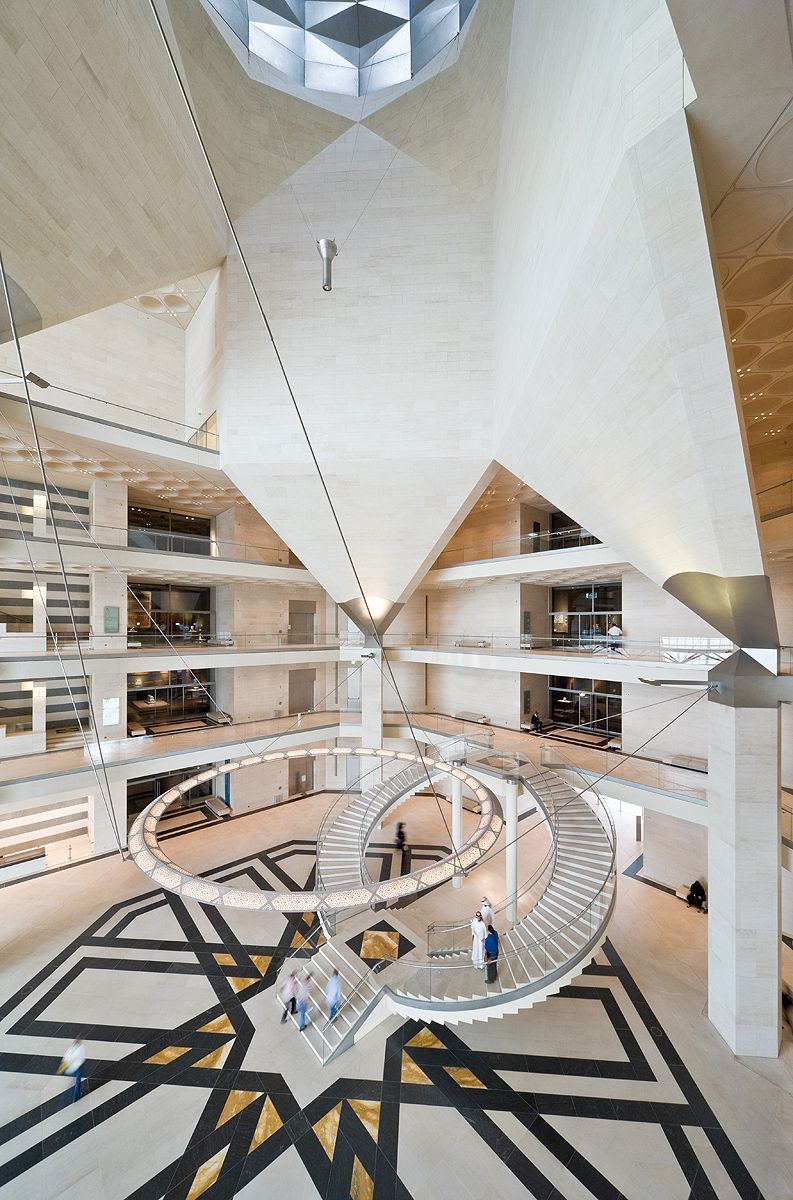

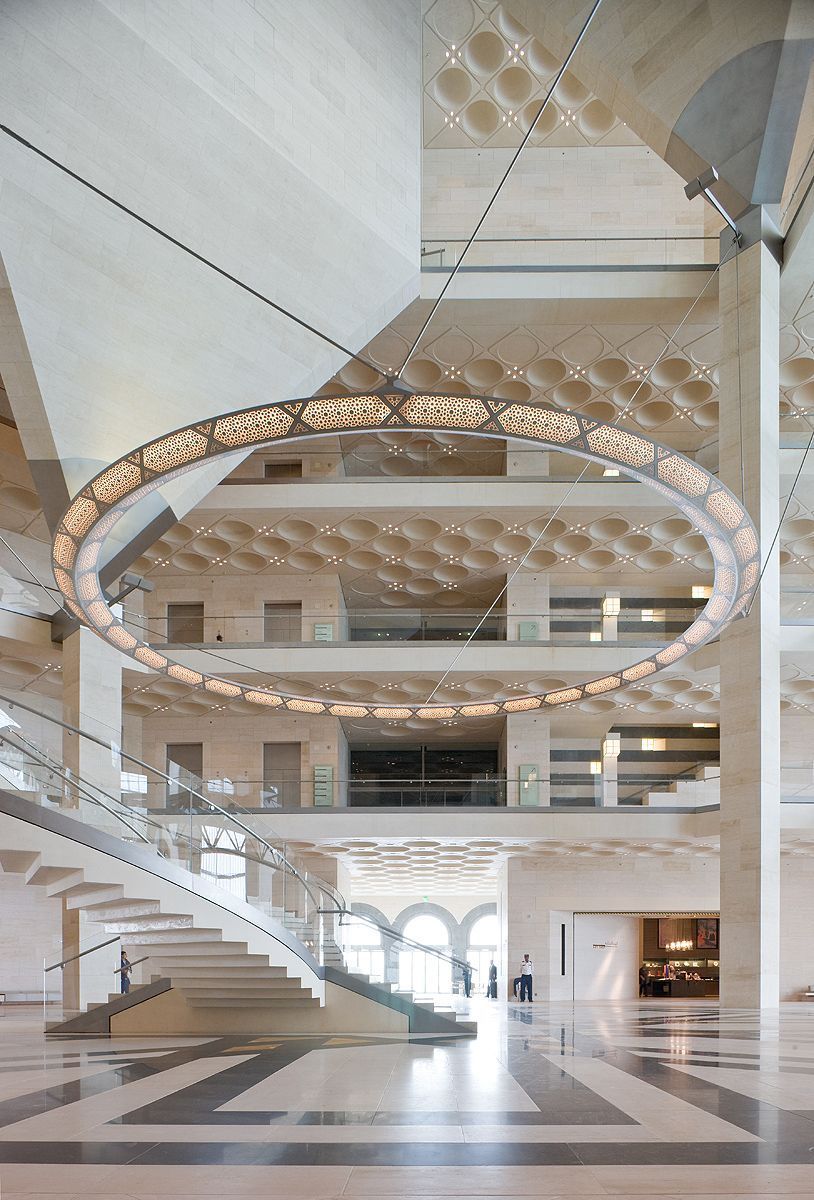
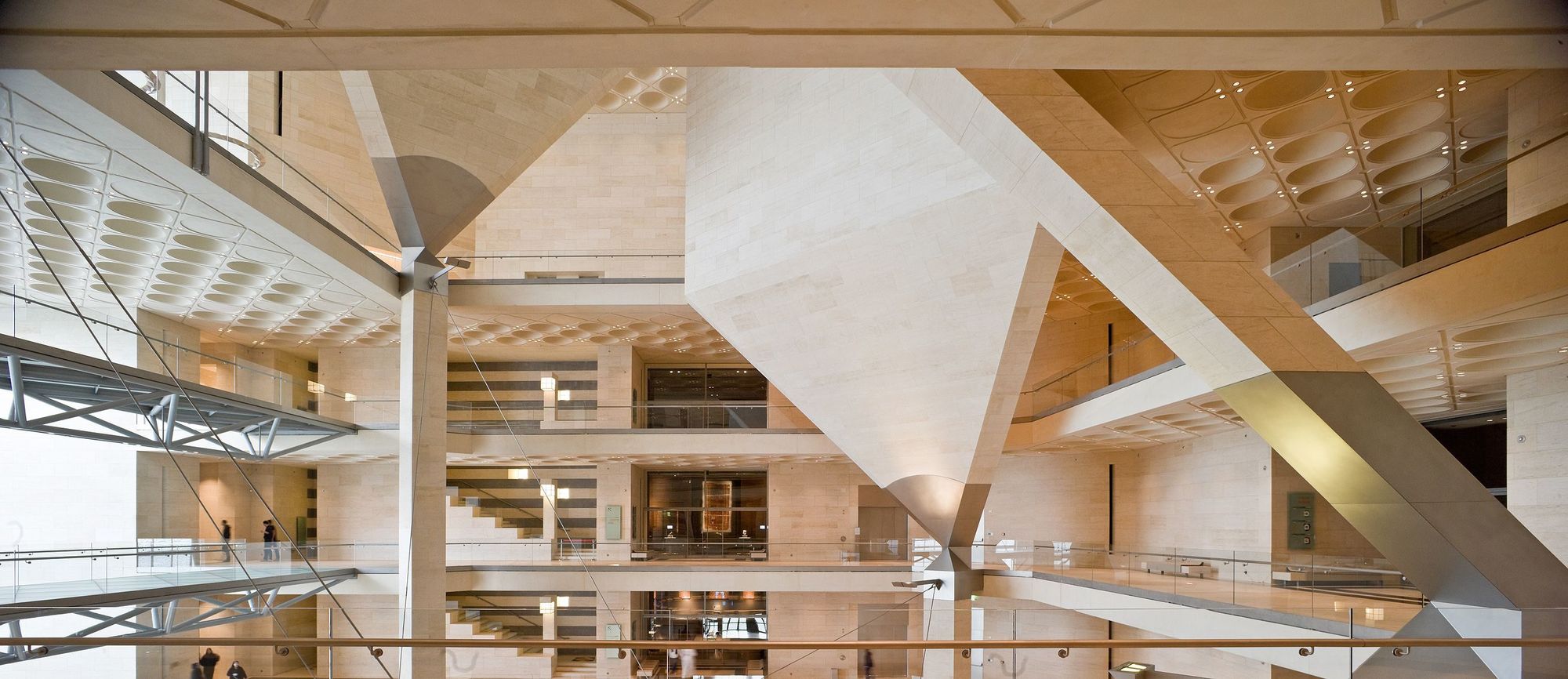
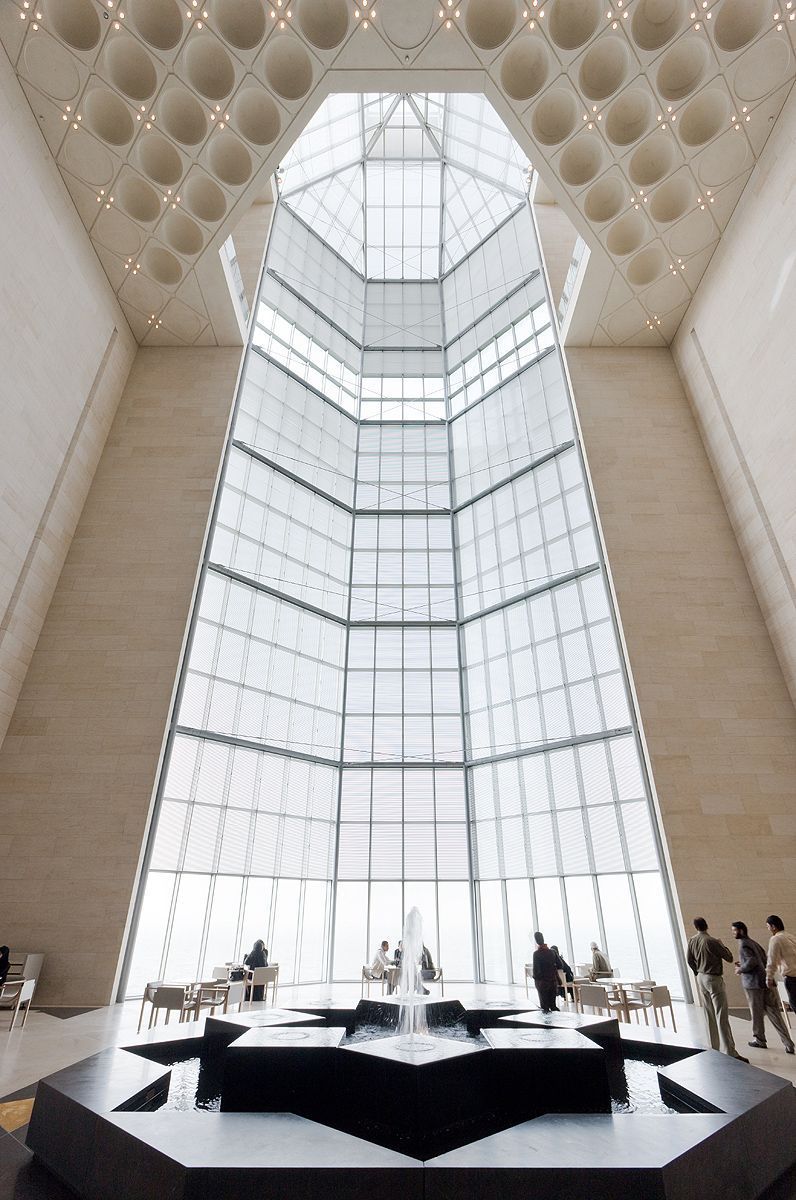

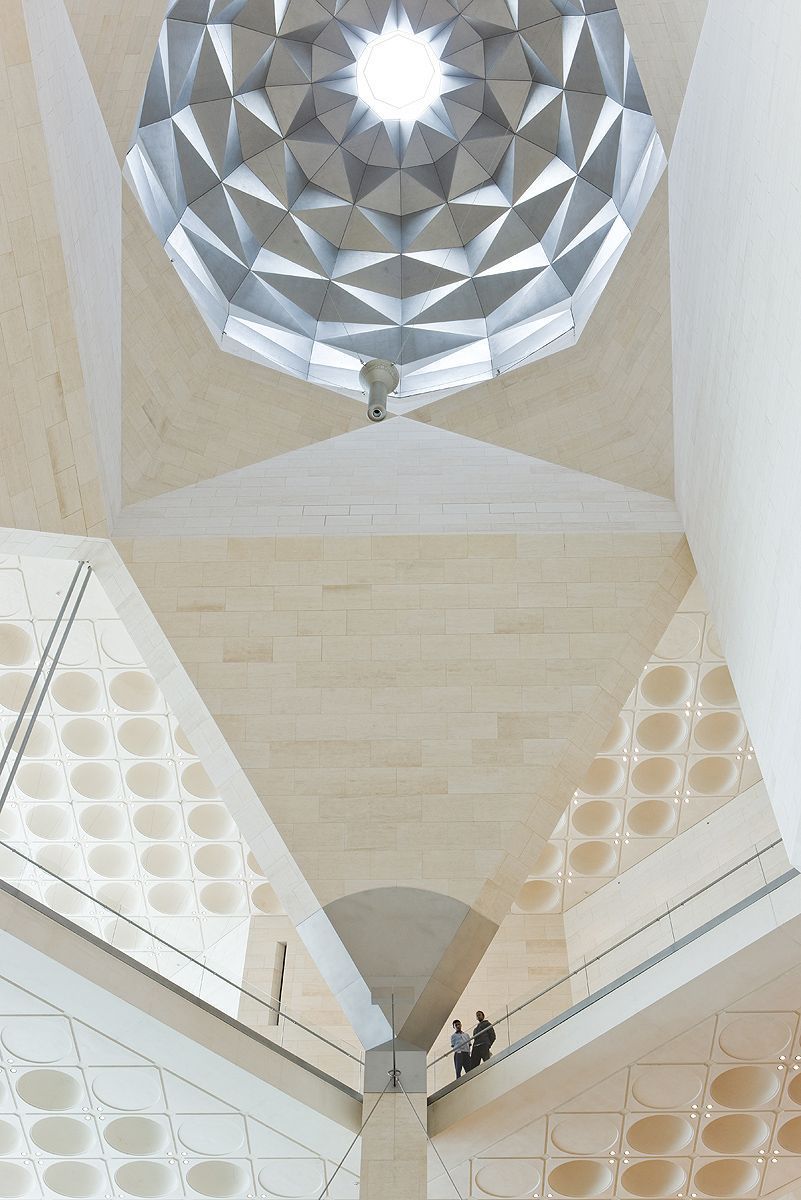
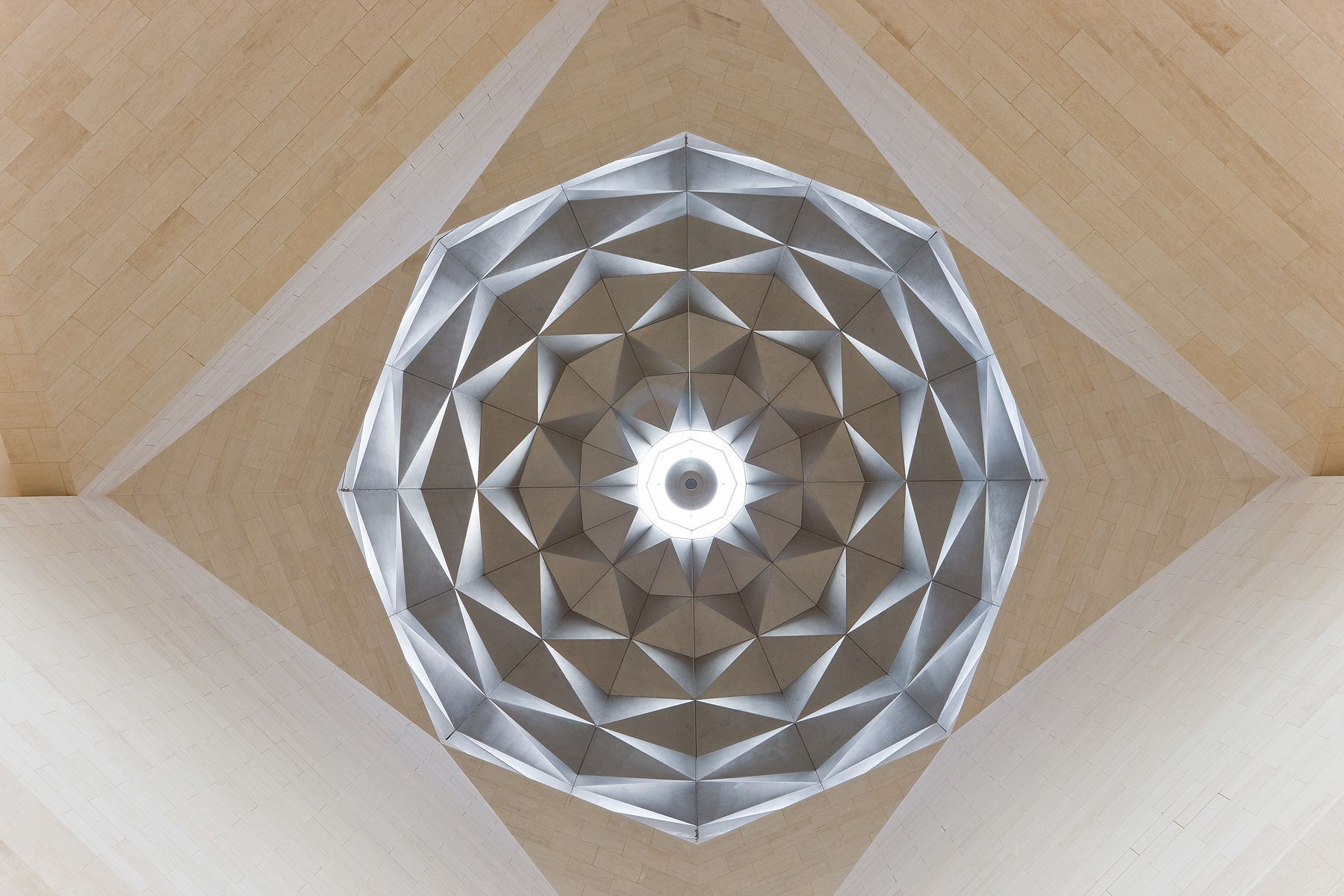
This project is a definition of elegant modesty and the deployment of geometric aesthetics. Also, it draws a pattern of what neo-vernacular Islamic architecture could be: an image of the past and future at once.
It uses the best of Islamic architectural principles and simplifies its geometric abstractions to be more light and relatable.
The museum draws a beautiful narrative of Qatari development over the years. Its symbolism draws strength from its immediate environment and strategic site choice.
